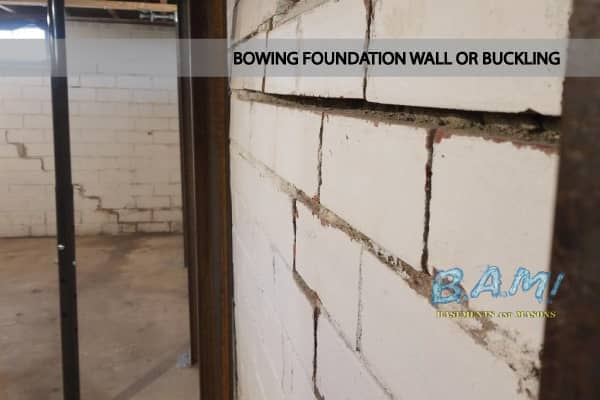A Biased View of Best Basement Waterproofing
A Biased View of Best Basement Waterproofing
Blog Article
Our Best Basement Waterproofing PDFs
Table of Contents6 Easy Facts About Best Basement Waterproofing ExplainedLittle Known Questions About Best Basement Waterproofing.The 25-Second Trick For Best Basement WaterproofingThe Main Principles Of Best Basement Waterproofing The Buzz on Best Basement Waterproofing
What creates water damages problems in your basement? Pipes that line the inside of your walls are simply one example of where water damages can happen.The soil and ground of your home is really essential. If there is way too much water bordering your home, nonetheless, it can press the dirt right into your home and trigger the seals of your basement to end up being endangered (Best Basement Waterproofing). when you see excess water in places where it must not be, that is an excellent indicator that you have a problem
Concrete waterproofing coverings are cement-like; once dry, they stick permanently to concrete and stonework wall surfaces. You apply the finish with a heavy brush made with bristles swirled throughout application for an appealing, completed appearance. Concrete water resistant coatings can not be applied to formerly painted surfaces Silicate-based concrete sealants, also known as densifiers, are likewise suitable only for walls that haven't been painted or sealed.
The Facts About Best Basement Waterproofing Uncovered
A sump pump is required to move water out of your cellar. In order to appropriately advise a service for your damp basement, call American Eagle for a no-obligation browse through. Our service technicians will be able to explain which remedies are choices for your home. Why should you waterproof your cellar? Here are a couple of points the professionals can install to aid the waterproofing process: this is developed for the wall surfaces of your basement.
It allows water to flow freely while also minimizing hydrostatic pressure created by inadequate soil services. They are designed to accumulate water that would typically leak into your home and remove it away from your home instead.
Best Basement Waterproofing for Beginners
It also assists stop the development of mold and mildew or mildew, which can be a quite large health risk. Cellar waterproofing is a wonderful way to get in advance of possible water damages that might come your means. Do not think twice to speak to neighborhood experts, like those at American Eagle with any waterproofing concerns you may have regarding what cellar waterproofing appears like and a lot more.
When it comes to protecting your home, one of Recommended Reading one of the most important actions you can take is cellar waterproofing. A completely dry cellar not only makes sure a secure and healthy environment for you and your family members, but it also aids to avoid costly water damages and mold growth. In this post, we will certainly discuss the relevance of cellar waterproofing, the advantages it supplies, and just how you can set about securing your room.
By purchasing cellar waterproofing currently, you can assist to make sure that your home keeps its value and appearance in time. Another advantage of cellar waterproofing is that it can aid to lower your energy bills. A wet basement can add to greater degrees of humidity in your house, which can make your HVAC system work more challenging to keep a comfy temperature level.
When it involves basement waterproofing, there are several techniques that can be made use of to keep water out of your space. These consist of interior sealers, exterior waterproofing membranes, and drainage systems. The best technique for your cellar will certainly depend upon variables such as the degree of water intrusion, the problem of your foundation, and your budget.
Best Basement Waterproofing - Truths

Interior sealants are a type of cellar waterproofing technique that includes using a sealer to the inside of the cellar walls and floors. Water can permeate into a basement via fractures, gaps, or permeable useful site concrete, specifically in locations where there is high groundwater or inadequate drain. This can bring about water damages and mold development, along with damages to the structure and structural integrity of the structure.
The sealer develops a barrier that protects against water from leaking through the concrete. Nonetheless, this technique is just reliable for small water damage dig this and does not deal with the underlying reasons of the moisture. The main source of the requirement for exterior basement waterproofing is water infiltration from the exterior of the structure walls.
The 2-Minute Rule for Best Basement Waterproofing
It is an efficient remedy for protecting against water damage and maintaining the architectural honesty of the building. Nonetheless, it can be costly and disruptive to mount, as it requires excavation around the structure and might involve landscaping and various other repair services once the waterproofing is full. Nevertheless, this approach is the most reputable and resilient service for protecting against water seepage in the cellar.
Structure crack injections are a technique of repairing cracks in the structure wall surfaces from the within, without excavating the dirt around the foundation. The process involves injecting a fluid polyurethane or epoxy right into the splits, which then solidifies and creates a waterproof obstacle that protects against water from permeating with. This approach is usually made use of for smaller fractures that do not position an architectural hazard, and can be finished swiftly and with very little disruption to the building's residents.
Report this page